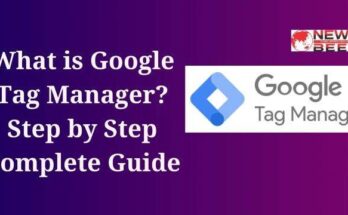A “dofollow” link is a type of hyperlink that allows search engines to follow and pass authority or “link juice” from one website to another. In contrast, a “nofollow” link instructs search engines not to follow the link or transfer any authority. Understanding the concept of dofollow links involves delving into the world of search engine optimization (SEO), web indexing, and how search engines determine the relevance and authority of web pages.
The Basics of Hyperlinks
To comprehend the significance of dofollow links, let’s first explore the fundamental concept of hyperlinks. Hyperlinks, or simply “links,” are elements on a webpage that, when clicked, navigate users to another webpage or resource. These links are crucial for website navigation and information retrieval on the internet.
Hyperlinks consist of an anchor text and a target URL. The anchor text is the clickable text that users see, and the target URL is the web address to which the link points. When a search engine’s web crawler encounters a link, it follows the link to discover new pages and index them for search results.
The Role of Search Engines
Search engines like Google use complex algorithms to determine the relevance and authority of web pages. Relevance refers to how well a page’s content aligns with a user’s search query, while authority is a measure of a page’s credibility and trustworthiness.
In the early days of the internet, search engines relied heavily on on-page factors like keyword density to determine relevance. However, as webmasters manipulated these factors to boost rankings, search engines evolved to consider off-page factors, particularly backlinks.
Understanding Backlinks
A backlink is a hyperlink on one website that points to another. Search engines view backlinks as votes of confidence or endorsements for the linked page. If many reputable websites link to a particular page, search engines infer that the page is valuable and, therefore, may rank it higher in search results.
Backlinks are not created equal. The quality and authority of the linking site matter. A backlink from a well-established and authoritative website carries more weight than one from a less reputable source.
Dofollow vs. Nofollow Links
The distinction between dofollow and nofollow links arises from the desire to combat spammy link-building practices. In 2005, major search engines introduced the “nofollow” attribute to help website owners control the flow of authority from their pages. When a link has the nofollow attribute, search engines are instructed not to follow it, and no authority is passed to the linked page.
Dofollow links, on the other hand, lack the nofollow attribute. They allow search engines to follow the link and pass authority to the linked page. Consequently, dofollow links are valuable for SEO, as they contribute to a page’s authority and influence its search engine rankings.
SEO and Dofollow Links
Search engine optimization is the practice of optimizing web pages to rank higher in search engine results pages (SERPs). Dofollow links play a crucial role in SEO because they contribute to a website’s backlink profile, a major factor in search engine algorithms.
1. Authority and Trust
Dofollow links are like votes of confidence from one website to another. When reputable and authoritative websites link to your content, search engines perceive your site as trustworthy and credible. This trust is a key factor in determining a page’s rank in search results.
2. PageRank Algorithm
Google’s PageRank algorithm, though no longer the sole determinant of search rankings, is based on the concept of link authority. Dofollow links pass PageRank, contributing to a page’s overall link authority. The more high-quality dofollow links a page receives, the higher its PageRank and, theoretically, its search rankings.
3. Indexing and Crawling
Search engines use crawlers to navigate the web, discover new content, and update their indexes. Dofollow links facilitate this process by guiding crawlers from one page to another. When search engine bots encounter a dofollow link, they follow it, index the linked page, and factor it into their ranking algorithms.
How to Identify Dofollow Links
Distinguishing between dofollow and nofollow links is crucial for SEO practitioners and website owners. Fortunately, it’s relatively straightforward.
1. Browser Inspect Tool
Most web browsers allow users to inspect the HTML code of a webpage. Right-clicking on a link and selecting “Inspect” or “Inspect Element” reveals the underlying code. Look for the “rel” attribute within the link tag. If it contains “nofollow,” the link is a nofollow link. Absence of the “nofollow” attribute indicates a dofollow link.
2. Browser Extensions
Several browser extensions simplify the process of identifying link attributes. These extensions highlight dofollow and nofollow links on a page, providing a quick visual indication of their nature.
3. SEO Tools
Various SEO tools and website analysis platforms also offer features to identify link attributes. These tools provide comprehensive reports on a website’s backlink profile, helping SEO professionals assess the quality and quantity of dofollow and nofollow links.
Strategies for Obtaining Dofollow Links
As dofollow links are highly valuable for SEO, webmasters and marketers employ various strategies to acquire them. Some ethical and effective approaches include:
1. High-Quality Content
Creating valuable and shareable content is one of the most effective ways to attract dofollow links naturally. When other websites find your content informative or engaging, they are more likely to link to it.
2. Guest Blogging
Guest blogging involves writing content for other websites within your niche. In exchange, you typically receive a byline with a dofollow link back to your site. This not only builds backlinks but also establishes you as an authority in your field.
3. Broken Link Building
Identifying broken links on reputable websites and reaching out to suggest your content as a replacement is a tactic known as broken link building. If the webmaster finds your content relevant, they may link to it, providing you with a valuable dofollow link.
4. Influencer Collaborations
Collaborating with influencers in your industry can result in dofollow links when they mention or endorse your content. Influencers often have authoritative websites, and links from them can significantly boost your SEO.
5. Social Media Promotion
While social media links are typically nofollow, the increased visibility and sharing of your content may attract organic dofollow links from other websites.
You May Also Read:
What is Digital Marketing in Hindi
SEO Interview Questions and Answers
The Evolving Landscape of Dofollow Links
The importance of dofollow links in SEO has led to various trends and practices, including both ethical and unethical strategies. As search engines continually refine their algorithms, some tactics that were once effective may become obsolete or even penalized.
1. Link Quality Over Quantity
Search engines prioritize the quality of links over their quantity. A few high-quality dofollow links from authoritative sites can have a more significant impact on SEO than numerous links from low-quality sources.
2. Natural Link Building
Search engines are increasingly adept at distinguishing between natural and manipulative link-building practices. Focusing on organic, natural link acquisition is essential for long-term SEO success.
3. Penalties for Unethical Practices
Engaging in unethical practices, such as buying links or participating in link schemes, can lead to severe penalties, including a drop in search rankings or even removal from search engine indexes. It’s crucial to adhere to ethical SEO practices to maintain a website’s credibility.
Conclusion
In summary, dofollow links are a fundamental element of SEO, influencing a website’s authority, trustworthiness, and search engine rankings. Understanding the difference between dofollow and nofollow links, as well as employing ethical strategies to acquire high-quality dofollow links, is essential for webmasters and SEO professionals. As search engines continue to refine their algorithms, staying informed about best practices and adapting to the evolving landscape of SEO is key to maintaining and improving a website’s online visibility.
FAQs:
1. Q: What is a dofollow link?
A: A dofollow link is a type of hyperlink that allows search engines to follow and pass authority or “link juice” from one webpage to another. It contributes to the target webpage’s search engine ranking.
2. Q: How does a dofollow link differ from a nofollow link?
A: While dofollow links pass on link equity, nofollow links do not. Search engines do not follow nofollow links, and they do not contribute to the target webpage’s ranking.
3. Q: Why are dofollow links important for SEO?
A: Dofollow links are essential for SEO because they help improve a webpage’s authority and ranking in search engine results. They are considered as a vote of confidence from one site to another.
4. Q: Where can I get dofollow links?
A: Dofollow links can be obtained through guest posting, influencer collaborations, editorial mentions, and natural link building. It’s important to focus on high-quality and relevant links.
5. Q: Are all external links automatically dofollow?
A: No, by default, links are dofollow. However, website owners can add a rel=”nofollow” attribute to the HTML code to indicate to search engines that they don’t want to pass on link equity.
6. Q: Can too many dofollow links be harmful?
A: Yes, having too many low-quality dofollow links or engaging in manipulative link-building practices can be harmful and may result in penalties from search engines.
7. Q: How can I check if a link is dofollow or nofollow?
A: You can inspect the HTML code of a webpage or use browser extensions/tools that highlight dofollow and nofollow links. Additionally, some online tools can analyze a website’s links.
8. Q: Do social media links provide dofollow or nofollow links?
A: Most social media platforms use nofollow links. While they can drive traffic and visibility, they do not directly contribute to the target webpage’s SEO.
9. Q: Can internal links be dofollow or nofollow?
A: Internal links are typically dofollow by default. However, website owners can use the nofollow attribute on internal links if they want to prevent the flow of link equity to certain pages.
10. Q: How quickly do dofollow links impact SEO?
A: The impact of dofollow links on SEO can vary. While some changes may be noticed relatively quickly, it often takes time for search engines to crawl and index new links and update the rankings accordingly. Patience is key in observing SEO results.





I simply could not go away your web site prior to suggesting that I really enjoyed the standard info a person supply on your guests Is going to be back incessantly to investigate crosscheck new posts